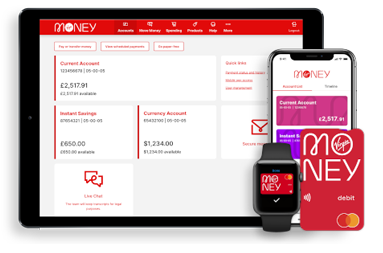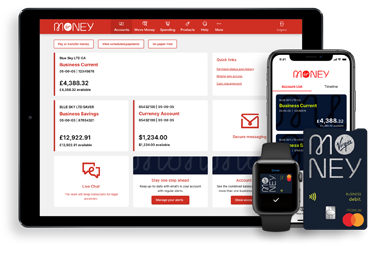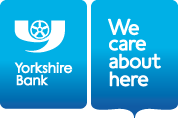-
Login
More Login links
Internet Banking
Business Internet Banking
Started an application?
Other services
Help
-
Register
More Register links
Internet Banking
Business Internet Banking
Other Services
- Our Products More business product links
Bank accounts
- Business current account
- Business choice account
- Switching business accounts
- Compare all business accounts
Savings accounts
Loans and Finance
- All Treasury solutions
Treasury solutions
Help and support
- Online Banking More online banking links
BusinessOnline
- Commercial More commercial business links
Business enquiries
Contact us about a general enquiry.
- Corporate and Structured Finance More corporate business links
Corporate and Structured Finance
SME Cashflow Finance
Unlock your cash flow potential. At Yorkshire Bank we take a flexible approach to business borrowing.
Lending is subject to status and eligibility.
- Our Sector Expertise More sector expertise links
Identifying, building and honing your competitive advantage as a business
< back to all business news articles
27/08/2019


A competitive advantage is what you are better at doing than anyone else. The smarter you can be about developing and promoting your competitive advantage, the better placed your business will be to succeed. It's important to remember that it's essential to differentiate yourself from the competition. For example, are your products more durable than those of your competitors? Do you deliver exceptional customer service while your competitors push self-service options? Are your staff members highly educated, friendly, and proactive? Do you offer a money back guarantee?
Usually the more similar your business is to your competitors, the harder it is to convince customers to choose you.
Two types of competitive advantage
Competitive advantage can be classified in one of two ways:
- 1. Differentiated – where your business's products or services differ from your competitors, to the point where customers see them as the only choice.
- 2. Comparative – where customers compare your business with another and choose you (you’re better value, faster, have better support, a wider range, more expertise etc)
Brainstorm possible advantages
While it's tempting to pick an appealing area and make it your competitive advantage, chances are you already have one.
List the areas of your business that you believe are superior to your competitors. For example, these areas might include:
- Your processes and delivery options.
- The uniqueness of your products or services.
- The expertise and back-up support of your staff.
- Your location and system of delivery.
- Your source of supply.
- A price advantage
Are you robust in a certain channel or market segment that's growing stronger than the market average? Can you sell higher volumes or gain more market share than your competitors?
Continue brainstorming – and pay specific attention to the following four areas.
- 1. Efficiency
Is your business efficient with labour, materials and productivity? Do you have strategic alliances or joint ventures in place? Highly proficient businesses tend to have lower costs, which could lead to a comparative competitive advantage.
- 2. Quality
Think about the quality of your products or services. Ask yourself:
- Will your offerings last longer than your rivals?
- Do you have an exclusive license or a patent?
- Do you have superior after-sales service?
- What benefits do customers receive when choosing your goods or services over those of your competitors?
Customers tend to appreciate products and services that last longer than they expect.
- 3. Innovation
List areas where your business is superior in terms of innovation and creativity. How are your products or services unique? Do you hold an extensive portfolio of intellectual property assets? Highlighting innovation could differentiate your business from its competitors.
- 4. Customer satisfaction
Depending on how you position your company's customer responsiveness, it could be either a differential or cost advantage. Some questions you could ask yourself and your staff include:
- How responsive is your business to customers?
- Are you conveniently located?
- Do you understand your customers' needs and are you able to solve their problems?
- Are your online portals and services user-friendly?
- Are your staff empowered to put the customer first?
Evaluate your competition
By now you should have several areas that could be your business's most essential competitive advantage. Next is to analyse your competitors thoroughly so you can either differentiate or be comparatively the better choice.
Keep in mind that relativity and perception are important. If your business is slightly better than your competitors on a vital ingredient in your industry, this can widen year-on-year into a significant advantage.
After brainstorming your list and making sure that your advantages are indeed superior to those of your competitors, develop a crystal-clear marketing strategy around them.
Summary
All businesses need a clear point of difference to win and retain customers. With sound, tangible advantages that can be understood and communicated to customers, you’ll increase the chance of gaining new customers.
Using these tips, decide how you'll exploit your advantage in the short-term and turn it into a sustainable competitive advantage over the long-term.
Next steps
- Start the brainstorming process
- Generate feedback from your customers to find out what you’re doing well, and why they buy from you.
- Use our branch locator to find a branch, or call us on 0800 032 3971.
POSTED IN: Growth,Finance advice
SHARE
Related Articles
You are here: Business Banking > Business News > Articles
- About Yorkshire Bank
- About us
- Virgin Money UK PLC
- Media relations
- Careers
- Modern Slavery Statement

Internet Banking has moved
To log into Internet Banking you now need to use Virgin Money Internet Banking. You'll get the same great service and are able to access all your accounts.
Your log in details will stay the same and you can log in directly from the shiny new Virgin Money website.
Continue to Virgin Money Internet Banking
Go to the Virgin Money website
Be Alert
Never tell anyone a token 3 response code, even someone from the bank. You should only input these codes to our secure Business Internet Banking service when you’re sending and making payments. If anyone calls and asks for a token 3 response code or asks you to authorise a payment on the App for fraud checks, hang up and call us on 0800 085 2914 from another line if possible, remember the Bank will never ask you to disclose your security details.
Continue to Virgin Money Business Internet BankingYou can find impartial information and guidance on money matters on the “MoneyHelper” website.
Yorkshire Bank is covered by the Financial Services Compensation Scheme (FSCS), Find out more.
